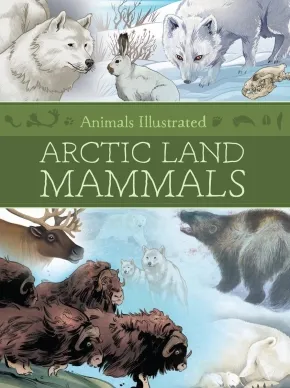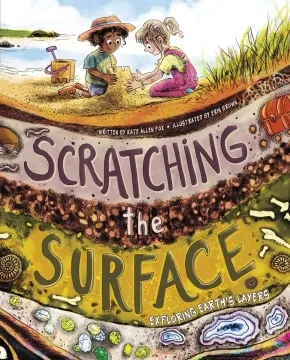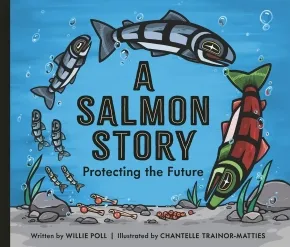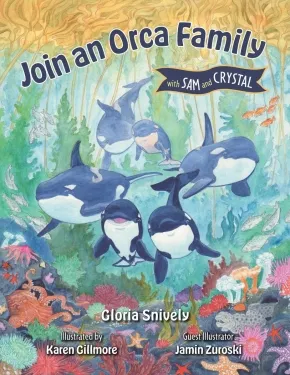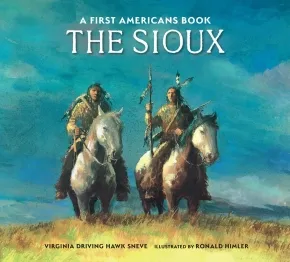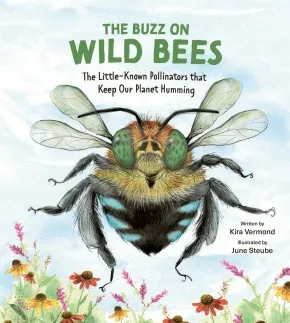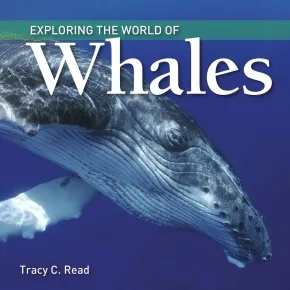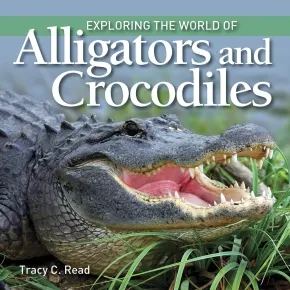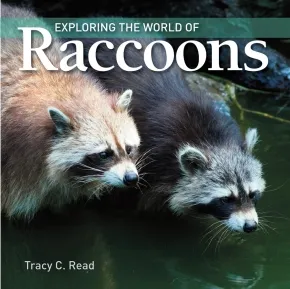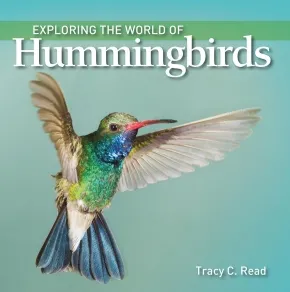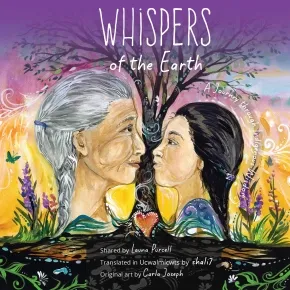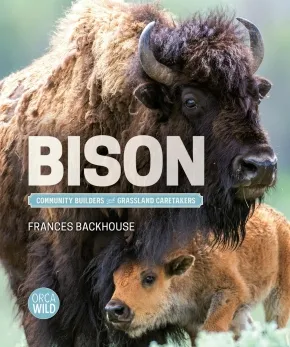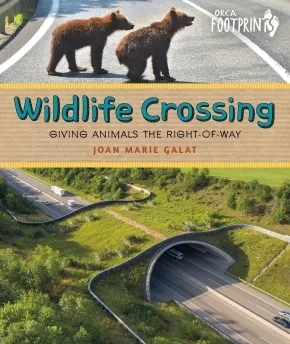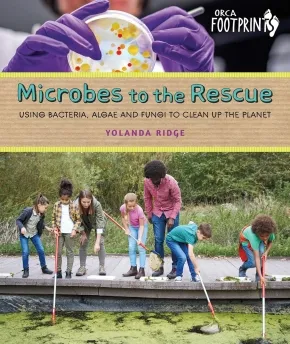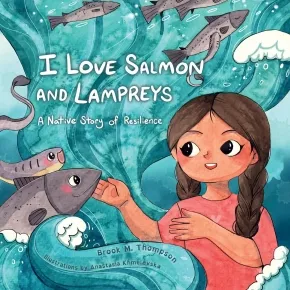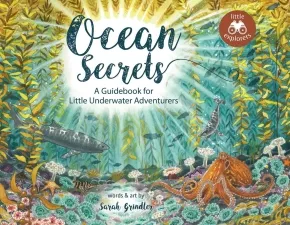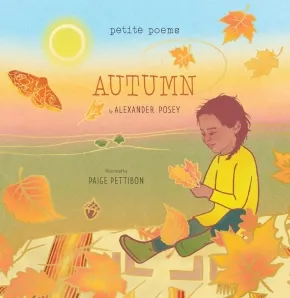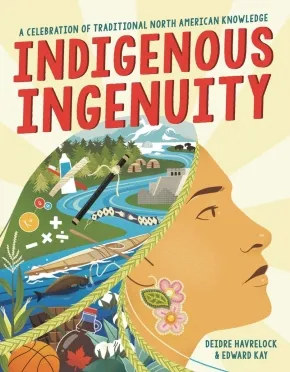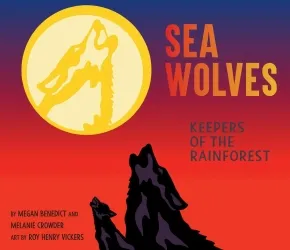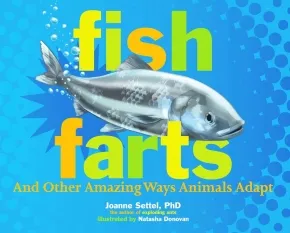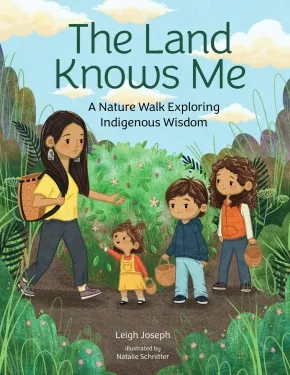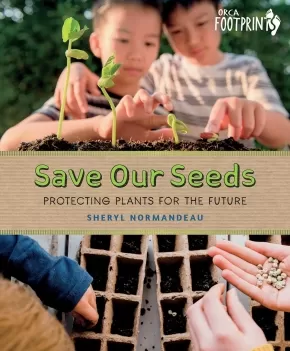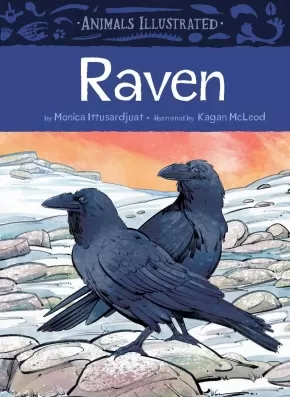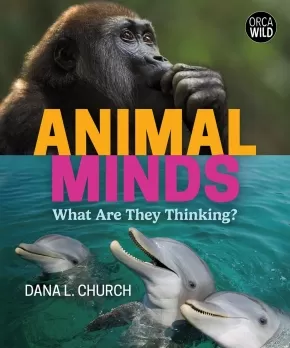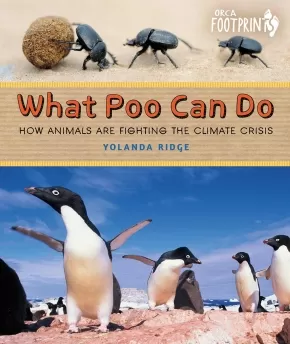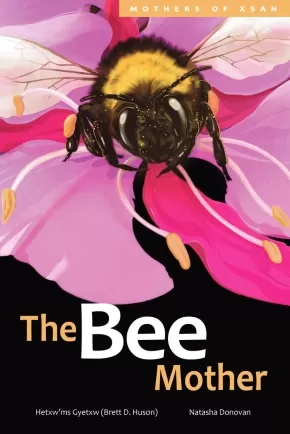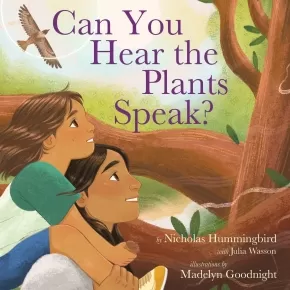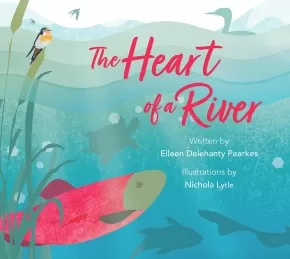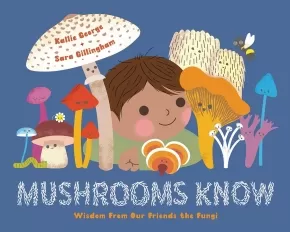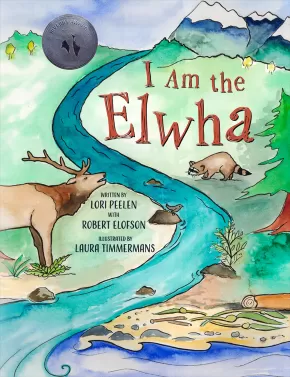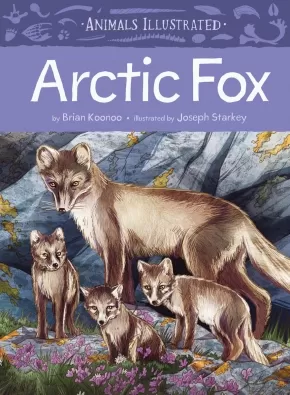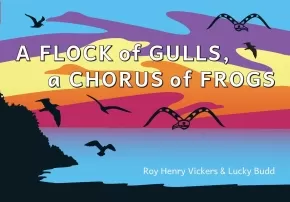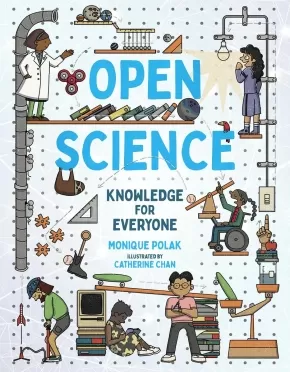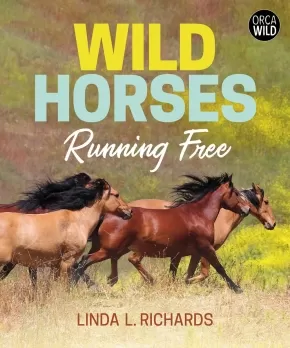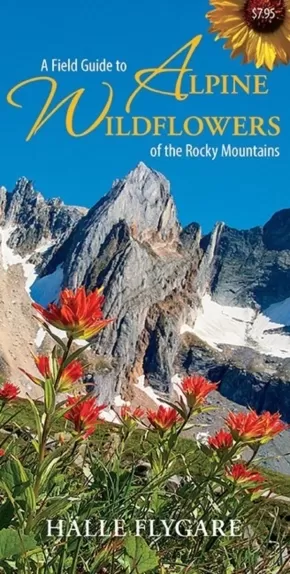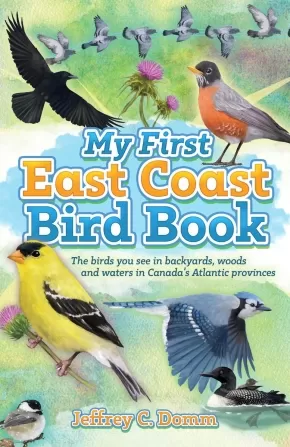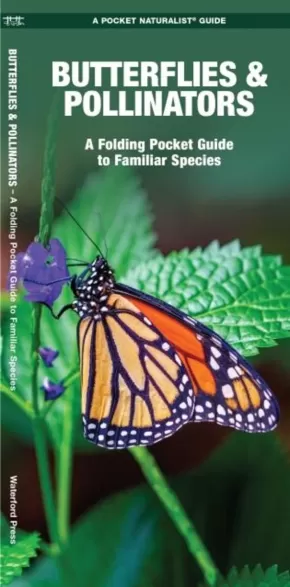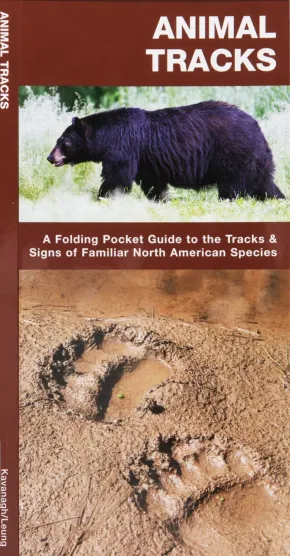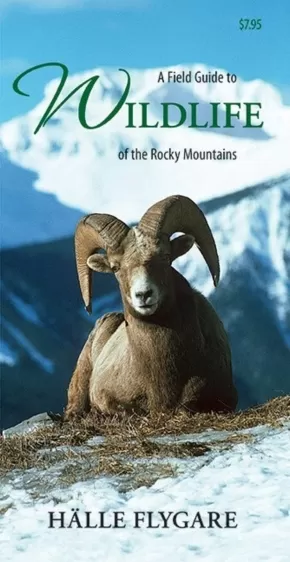
Science and Technology
1
-
15
of
427 Results;
Sort By
Go To
of 29
Animals Illustrated: Arctic Land Mammals
$24.95
Format:
Hardcover
ISBN / Barcode: 9781772275858
Synopsis:
Synopsis:
Animals Illustrated mixes fun-filled animal facts suitable for the youngest of readers with intricately detailed illustrations to create a unique and beautiful introduction to Arctic animals for young readers. This collection of material from the Animals Illustrated series gives readers a focused understanding of how land mammals survive in the Arctic, what they have in common that helps them withstand the icy cold temperatures, and how their unique behaviours and adaptations help them succeed in this habitat.
Presented in the form of an illustrated children’s encyclopedia, this book provides introductory information about mammals, predator and prey relationships, and how animals adapt to live in the Arctic, before providing detailed spreads with facts about each of the following animals: polar bears, Arctic wolves, Arctic foxes, muskoxen, caribou, wolverines, lemmings, and Arctic hares.
Educator & Series Information
Recommended Ages: 6-8
This book is part of the non-fiction Animals Illustrated series, which mixes fun-filled animal facts suitable for the youngest of readers with intricately detailed illustrations to create a unique and beautiful collection of children’s non-fiction books on Arctic animals. Each volume contains firsthand accounts from authors who live in the Arctic, along with interesting facts on the behaviours and biology of each animal.
Reading Levels
Fountas & Pinnell Text Level Gradient: P
Guided Reading Level: P
Additional Information
48 pages | 8.00" x 11.00" | Hardcover
Scratching the Surface: Exploring Earth's Layers
$25.99
Artists:
Format:
Hardcover
ISBN / Barcode: 9781630793326
Synopsis:
Synopsis:
A lyrical, scientific exploration of what’s below our feet, this gorgeously illustrated informational picture book digs into geological discoveries—and embraces the mysteries science has yet to solve. Join “science poet” Kate Allen Fox on a journey to the center of the Earth in this fascinating, wonder-filled investigation of Earth’s layers. Illustrated cross-sections and additional nonfiction back matter about the scientific method make this narrative nonfiction a comprehensive and satisfying experience for young scientists.
Educator Information
Recommended for ages 7 to 10.
Reading Level: Grades 2 to 4.
Additional Information
32 pages | 8.00" x 10.00" | Hardcover
A Salmon Story: Protecting the Future
$22.95
Artists:
Format:
Hardcover
Text Content Territories:
Indigenous Canadian; First Nations; Salish; Interior Salish; St'at'imc (Lillooet, Lil'Wat);
ISBN / Barcode: 9781771476461
Synopsis:
Synopsis:
A lyrical informational picture book about how open-net pen fish farms impact wild salmon and their ecosystems
Salmon are central to their ecosystem and the lives of many Indigenous Nations, but the rapid rise of open net-pen fish farming has threatened these longstanding connections. Salmon have followed the same migration routes for thousands of years, but the fish farming industry has had a deadly impact on their annual journey. Open-net pen farms release harmful waste into the ocean that is lethal to the wild salmon forced to swim through it. Now, the salmon must battle against the human-made destruction of their habitat, and many Nations are advocating for change and creating calls of action to protect salmon for future generations.
As the young salmon journey from their gravel nests to the open ocean, readers learn about the life cycle of wild salmon, the effects of open-net pen fish farms, and the role of salmon as a keystone species.
Boldly illustrated with gorgeous Northwest Coast formline art, rhythmic poetry combines with supportive nonfiction content to illuminate the struggles faced by wild salmon populations.
Educator Information
Recommended for ages 5 to 8.
Fountas & Pinnell Text Level Gradient: J
Lexile measure: 980L
Additional Information
40 pages | 10.00" x 8.50" | Hardcover
The Cedar Mother
$24.95
Artists:
Format:
Hardcover
Text Content Territories:
Indigenous Canadian; First Nations; Gitxsan (Gitksan);
ISBN / Barcode: 9781774921586
Synopsis:
Synopsis:
From small sapling to towering giant, follow the long life of a cedar tree in this illustrated book for young scientists.
Step outside to explore the hidden mysteries of the cedar tree life cycle in this beautifully illustrated, engaging non-fiction book for young scientists ages 9 to 12.
Meet Nox Sim Gan, the cedar mother, whose life cycle spans centuries and whose roots anchor the landscape. The cedar mother plays a vital role in the ecosystem: offering shelter for birds in her strong limbs, providing refuge for small creatures beneath her bark, and healing the Gitxsan with a medicinal tea made from her soft, green leaves. She also creates the very oxygen that all land-dwelling creatures need to breathe.
Delve into the remarkable story of the western red cedar as you learn how she nourishes herself through an unexpected connection to salmon, the secret web of life that thrives beneath the ground, and how, at the end of her life, she leaves a final gift for the Gitxsan. This book invites young readers to discover the life of a tree that is much more than meets the eye, offering lessons in interconnectedness, and in wisdom passed down through generations.
Educator & Series Information
Recommended for ages 9 to 12.
Lexile measure: 1050L
This book is part of the Mother of Xsan series, which uses striking illustration and lyrical language to bring the poetry of the Xsan ecosystem to life. It is the eighth book in the series.
Additional Information
32 pages | 6.50" x 10.00" | Hardcover
Join an Orca Family with Sam and Crystal
$29.95
Artists:
Format:
Hardcover
Text Content Territories:
Indigenous Canadian;
ISBN / Barcode: 9781038305527
Synopsis:
Synopsis:
Sam has always dreamed about being an orca, while Crystal discovers she hopes to grow up and study orcas as a marine biologist. When the siblings head to the Pacific coast to visit their aunt and uncle, they are in for a treat! Aunt Kate is a marine biologist, and she has all kinds of interesting facts to share about the Resident orca pods.
Sam and Crystal learn about the different populations of orcas and their food sources, attend the Save the Salish Sea Festival with an Indigenous woman, and have their own incredible adventure with an orca pod. They come away with a new understanding about the role they play in protecting our animal friends and what it will take to ensure that the orca pods have their own vibrant, beautiful future.
Join an Orca Family with Sam and Crystal is the fourth book in the Sam and Crystal series. It weaves a wealth of factual information about the orcas of the Pacific Northwest Coast with an entertaining story and beautiful, whimsical, biologically accurate illustrations. Children will learn basic ecology concepts while exploring the Pacific coastline right alongside Sam and Crystal.
Educator & Series Information
Recommended for ages 11 and under.
This book is part of the Explore with Sam and Crystal Series.
Additional Information
64 pages | 8.50" x 11.00" | Hardcover
The Sioux
$12.49
Artists:
Format:
Paperback
Text Content Territories:
Indigenous American; Native American; Sioux;
ISBN / Barcode: 9780823460953
Synopsis:
Synopsis:
Award-winning author Virginia Driving Hawk Sneve introduces young readers to the Sioux peoples.
The buffalo was the center of Sioux life. After hunting buffalo on horseback, the Sioux people would use every piece of the animal, making food, beds, clothing, storage boxes, and even sleds from the ribs! Discover how the Sioux people lived on the Great Plains with this accessible introduction. Learn about the Sioux creation story, life in the village as a kid, the importance of their feathered headdresses, and more.
This updated edition provides the most up to date and accurate information on the Sioux people of past and present. The back of the book includes a section on Sioux life today, proper names for all of the Sioux tribes, and an excerpt from the Lakota pipe ceremony.
Educator & Series Information
Recommended for ages 7 to 10.
This book is part of the First Americans series.
Additional Information
32 pages | 10.55" x 9.47" | Paperback
The Buzz on Wild Bees: The Little-Known Pollinators that Keep Our Planet Humming
$22.95
Artists:
Format:
Hardcover
ISBN / Barcode: 9781771476171
Synopsis:
Synopsis:
An engaging introduction to the wide world of wild bees
Say the word "bee," and most kids think of honeybees or bumblebees. But there are around 20,000 discovered species of bees-and most of these are wild, solitary bees that don't live in hives. Readers will discover fascinating facts about these lesser-known bee species, from mason bees and mining bees to leafcutter bees and vulture bees.
Using clear, concise language and plenty of fun word play, this introduction to wild bees describes their life cycles, habitats, and behaviors ... some of which are weirder than others! It also explains the importance of wild solitary bees to many ecosystems, the challenges these bees face, and the things we can do to be part of the solution.
Vibrant, detailed illustrations created with pencil, crayon, and watercolor provide close-up views that are buzzing with life. Full of fun facts, The Buzz on Wild Bees invites readers to celebrate and protect all the world's bees.
Educator Information
Recommended for ages 7 to 10.
Additional Information
40 pages | 8.50" x 9.50" | Hardcover
Exploring the World of Whales
$6.95
Format:
Paperback
ISBN / Barcode: 9781770859494
Synopsis:
Synopsis:
With sturdy, streamlined bodies, outfitted with insulating blubber, flippers, tail flukes and fins, whales -- all known as cetaceans -- are built for life in the water. In Exploring the World of Whales, we meet the baleen whales and the largest members of the toothed whales, including the killer whale, the biggest of the dolphins. These marine mammals range in size from the 108-foot-long (33 m) blue whale to the barely 9-foot-long (2.7 m) dwarf sperm whale while boasting a range of distinctive physical traits, including the sperm whale's gigantic head, the humpback's barnacle-covered body and outsized flippers, and the narwhal's eight-foot-long tusk.
Young readers will learn the difference between the baleen and toothed whales and how these differences affect habitat, diet and behaviors. They'll discover how whales communicate with one another across vast stretches of ocean, how some cooperate to raise families and hunt their prey, and how some are capable of remarkable feats of migration and deep diving. A lively, fully illustrated introduction to some of the planet's most intelligent species, this book also addresses the ongoing risks to whale populations.
Reviews
"Crisp photographs accompany interesting text that provides fascinating information about both baleen and toothed whales of many varieties. There's information here about diet, habitat, communication, behavior, and social interactions." — Teresa Bateman, Puget Sound Council for the Review of Children's and Young Adult Literature, August 2018
Educator & Series Information
Recommended for ages 7 to 12.
The Exploring the World of... nature series was created for young readers who are eager to learn more about the wild creatures of the world. Each title contains beautiful photographs of the animals in their natural habitats and the highly readable text explores their daily lives and physical characteristics, how they make their homes, how they raise their young and what they eat.
Additional Information
24 pages | 8.00" x 8.00" | full color throughout, index | Paperback
Exploring the World of Alligators and Crocodiles
$6.95
Format:
Paperback
ISBN / Barcode: 9781770859432
Synopsis:
Synopsis:
Silently suspended in water, with only their eyes, nostrils and ears breaking the surface, these members of the crocodilian family play a terrifying sit-and-wait game with their prey, striking with lightning speed, chilling accuracy and a deadly bite stronger than any other living creature. Their victims stand little chance once held in their strong jaws. Land-dwelling prey are equally at risk--crocodilians can walk, gallop and leap at high speed, making them among nature's fiercest predators.
The crocodile and alligator families descend from the reptiles that roamed Earth alongside the dinosaurs some 250 million years ago. Today, most of the land-dwelling crocodilians live in tropical lowlands, while the broad-snouted American and Chinese alligators have adapted to cooler temperatures.
In Exploring the World of Alligators and Crocodiles, young readers will learn about the crocodilians' life history, physical characteristics, courtship displays, communication strategies and family life. They'll also find out how these semiaquatic reptiles rely on their senses and speed to survive--and why humans should keep their distance.
Reviews
"There's plenty of nonfiction for elementary grades, but finding attractive nonfiction for secondary can be more of a challenge. The "Exploring the World of..." series answers that need. Crisp close-up photographs augment the clear, well-written text... Younger students would find much to enjoy in the photographs. Reader will learn about hummingbird history, anatomy, diet, and flight ability. Mating, nesting, and life cycle are briefly covered. A wide variety of hummingbirds are highlighted. The text is aflutter with interesting facts. An index is included... This is an eye-catching book suitable for secondary library shelves." — Teresa Bateman, Puget Sound Council for the Review of Children's and Young Adult Literature, August 2018
"The photography contained in Exploring the World of Alligators and Crocodiles is exquisite. The anatomical structure is detailed and diagrammed. Sensory data is displayed and courtship pictures and inset with young hatching. A crocodilian gallery features the variety of this order, from the Saltwater Crocodile and Cuvier's Dwarf Caiman to the American Alligator and Mugger Crocodile. The photographers portray a species that is dangerous, yet protected as its numbers decrease." — Judy Kraus, National Science Teachers Association, September 2017
Educator & Series Information
Recommended for ages 7 to 12.
The Exploring the World of... nature series was created for young readers who are eager to learn more about the wild creatures of the world. Each title contains beautiful photographs of the animals in their natural habitats and the highly readable text explores their daily lives and physical characteristics, how they make their homes, how they raise their young and what they eat.
Additional Information
24 pages | 8.00" x 8.00" | full color throughout, index | Paperback
Exploring the World of Raccoons
$6.95
Format:
Paperback
ISBN / Barcode: 9781554076178
Synopsis:
Synopsis:
A glimpse inside the daily life of nature's masked bandits.
Children find the bandit-masked face and button nose of a raccoon irresistibly cute, and catching a glimpse of one in a neighborhood tree never fails to excite. Raccoons describes the natural history of these cousins of the panda bear and explains how that heritage helps them thrive in cities as well as in fields and woodlands. Color photographs of adults and kits in urban and natural settings give readers the chance to look more closely at these elusive creatures, and children will enjoy the amusing descriptions of the raccoon's antics and mischief. But Raccoons also shows youngsters why they shouldn't feed these brazen visitors and that, even though they share our cities and towns, raccoons will always be wild animals.
Educator & Series Information
Recommended for ages 7 to 12.
The Exploring the World of... nature series was created for young readers who are eager to learn more about the wild creatures of the world. Each title contains beautiful photographs of the animals in their natural habitats and the highly readable text explores their daily lives and physical characteristics, how they make their homes, how they raise their young and what they eat.
Additional Information
24 pages | 8.00" x 8.00" | Full-colour photographs throughout, index | Paperback
Exploring the World of Hummingbirds
$6.95
Format:
Paperback
ISBN / Barcode: 9781770859470
Synopsis:
Synopsis:
There's no greater thrill than spotting one of these tiny birds in the garden, and young readers will be fascinated by how this avian machine works. Hummingbirds are the smallest birds in the world, but they exploit every advantage that comes with their modest size. Exploring the World of Hummingbirds is a fully illustrated introduction to the hummingbird's high-performance lifestyle.
Built for efficiency and fueled with high-energy nectar, this bird runs at a high temperature during the daytime, its heart beating 650 beats a minute, and its dense feathers keep it warm at night as it rests. Most impressive, however, are its skills as an aerial acrobat. Like a helicopter, it can move forward, backward and sideways. When feeding from a blossom, it can hover in midair and then turn and whir away at full speed -- all in two-tenths of a second.
Readers will find out how hummingbirds and flowers have evolved for their mutual success. They'll also discover intriguing facts about hummingbird biology, flight, mating and nesting behaviors, family life, migration, and just how a hummingbird achieves and maintains its dazzling, shimmering colors.
Reviews
"There's plenty of nonfiction for elementary grades, but finding attractive nonfiction for secondary can be more of a challenge. The "Exploring the World of..." series answers that need. Crisp close-up photographs augment the clear, well-written text... Younger students would find much to enjoy in the photographs. Reader will learn about hummingbird history, anatomy, diet, and flight ability. Mating, nesting, and life cycle are briefly covered. A wide variety of hummingbirds are highlighted. The text is aflutter with interesting facts. An index is included... This is an eye-catching book suitable for secondary library shelves." — Teresa Bateman, Puget Sound Council for the Review of Children's and Young Adult Literature, August 2018
"Provides a detailed description of these tiny birds ranging from 3 to 21 cm and weighing a mere 11 grams or less... The photography contained in Exploring the World of Hummingbirds is exquisite. The hummingbird appears in mid-flight on the cover, resplendent in all its colors. A gallery of hummingbirds illustrates the wide variety of pigmentation, from non-iridescent colors produced by chemicals to the iridescent ones that are structural. The anatomical structure is magnified and diagrammed. The search for nectar is even captured on the page." — Judy Kraus, Science Scope Magazine, December 2017
"An educational book written especially for young people ages 8-12. Eye-catching, full-color photographs of these beautiful, tiny, and energetic birds in flight, feeding, or raising their young fill this captivating browse... An index rounds out this choice pick for school and public library middle grade collections. Also highly recommended are the other titles in the "Exploring the World" series." — Midwest Book Review, November 2017
"This series has a different approach than typical animal books and goes beyond a basic introduction. The books provide the reader with another perspective and focus on different forms of survival tactics. Diagrams of the animals are presented describing different body parts and their functions. Another chapter discusses the natural talents of the animal... An extensive index is included. Recommended."--Library Media Connection, of the previous books in the series
Educator & Series Information
Recommended for ages 7 to 12.
The Exploring the World of... nature series was created for young readers who are eager to learn more about the wild creatures of the world. Each title contains beautiful photographs of the animals in their natural habitats and the highly readable text explores their daily lives and physical characteristics, how they make their homes, how they raise their young and what they eat.
Additional Information
24 pages | 8.00" x 8.00" | Paperback
Whispers of the Earth: A Journey through Indigenous Wisdom
$29.00
Artists:
Format:
Paperback
Text Content Territories:
Indigenous Canadian; First Nations; Salish; Interior Salish; St'at'imc (Lillooet, Lil'Wat);
ISBN / Barcode: 978-1-73869-534-8
Synopsis:
Synopsis:
Prepare to embark on a journey rich with the wisdom of our ancestors and the secrets shared by Mother Earth.
In this children’s book, you will follow a path once tread by those before us, where the songs of the trees, the dance of the rivers, and our stories are carried by the wind. These teachings are invaluable treasures passed down through generations.
You’ll discover the language of animals, the lessons of plants, and the wisdom of the land. If you listen closely, you will hear the “Whispers of the Earth,” guiding you on this incredible adventure.
Educator Information
Recommended for kindergarten to grade 7.
Carl Sam advised on the language, and is “Ha7li” of the Bear Clan from Skookumchuck, part of St’at’icmulh Nation, sometimes referred to as the Interior Salish. Through this book, he shares elements of the Ucwalmícwts language.
Includes some words in Ucwalmícwts.
Additional Information
60 pages | 20 × 20 × 1 cm | Paperback | Printed locally on 100% post-consumer recycled paper.
A Kid's Guide to Plants of the Great Lakes Region: Including Southern Ontario with Cool Facts, Activities and Recipes
$26.95
Format:
Paperback
Text Content Territories:
Indigenous Canadian;
ISBN / Barcode: 9781998526109
Synopsis:
Synopsis:
A middle-grade-friendly introduction to flora of the Great Lakes Region, with outdoor activities, games and quizzes that make learning about nature fun! Great for families and educators.
Get dirty digging up roots. Crouch down to look closely at a carnivorous sundew dissolving a dragonfly. Make an elderberry concoction. Test your plant ID skills with a winter twig quiz. Make a soothing plantain salve to treat an itch. Learn which berries you can eat and which to avoid.
Time spent outdoors encourages children’s self-confidence and independence, increases attention span and physical well-being, and fosters care for the environment. With the increasing intrusion of technology into daily life, and the challenges of climate chaos, it has never been more essential for parents and educators to encourage kids to engage with the natural environment. Plants are everywhere, even in urban areas where parks, empty lots and backyards offer the opportunity to learn from and connect to nature.
Drawing on their years of experience as outdoor educators, co-authors Philippa Joly and Danielle Gehl Hagel feature fifty richly illustrated plant profiles, including information on identification and ecology, cultural uses, and fun activities—all in a way that is accessible and interesting to readers of all ages.
Educator Information
Juvenile Nonfiction.
Additional Information
224 pages | 8.50" x 8.50" | Paperback
Bison: Community Builders and Grassland Caretakers
$24.95
Format:
Hardcover
Text Content Territories:
Indigenous American; Indigenous Canadian; First Nations; Assiniboine (Nakoda Oyadebi); Carry The Kettle Nakoda First Nation; Métis;
ISBN / Barcode: 9781459839236
Synopsis:
Synopsis:
Bison are North America’s largest land animals.
Some 170,000 wood bison once roamed northern regions, while at least 30 million plains bison trekked across the rest of the continent. Almost driven to extinction in the 1800s by decades of slaughter and hunting, this ecological and cultural keystone species supports biodiversity and strengthens the ecosystems around it. Bison: Community Builders and Grassland Caretakers celebrates the traditions and teachings of Indigenous Peoples and looks at how bison lovers of all backgrounds came together to save these iconic animals. Learn about the places where bison are regaining a hoof-hold and meet some of the young people who are welcoming bison back home.
Educator & Series Information
Recommended for ages 9 to 12.
This book is part of the Orca Wild series that examines the intricacies of animals, ecosystems, humans and our relationships to each other.
This STEAM title examines the biology and habitat of bison, their role as a keystone species, their importance to Indigenous cultures, conservation efforts, and how kids can take action to protect bison in the future.
Reading Levels:
Fountas & Pinnell Text Level Gradient: W
Lexile measure: 1020L
Guided Reading Level: W
Contains some Indigenous content, such as a contribution from Kaleya Blackbird Runns from the Carry the Kettle Nakoda Nation in Saskatchewan, as well as information on the bison's importance to many Indigenous cultures in North America.
Additional Information
96 pages | 7.50" x 9.00" | 96 colour photographs, 2 maps, 1 index, 1 bibliography | Hardcover
Wildlife Crossing: Giving Animals the Right-of-Way
$21.95
Format:
Hardcover
ISBN / Barcode: 9781459833463
Synopsis:
Synopsis:
What happens when the needs of people and nature collide?
More than 13 million miles of roads crisscross landscapes in 222 countries. Roads offer many human benefits, but they also create problems for nature. Their construction leads to a loss of biodiversity through habitat loss, fragmentation and degradation. Roads isolate wildlife populations, impede migration and allow invasive plant and animal species to spread, while giving rise to pollution from garbage, light, noise and airborne contaminants. With innovative tools, like wildlife overpasses to reconnect landscapes, smart roads and vehicles to maximize safety, and a little hands on help, we can create environmental harmony. And sitting in the passenger seat, young people can play a part in helping highways and habitats coexist.
Reviews
“Well organized and includes clearly explained examples from many locations…This volume offers considerably more information for students researching the topic. An intriguing subject and a good resource for middle-grade reports.”— Booklist
“Gorgeous, crisp photographs complement the well-written text…A first purchase for libraries that need more books on the topic of conservation and the impact of development on wildlife.” — School Library Journal (SLJ)
“A fascinating, invaluable and enlightening tool for libraries, schools and homes alike. Wildlife Crossing will empower all readers to do their part when it comes to road ecology and will undoubtedly spark meaningful conversations about what it means to coexist with nature. Very highly recommended.”— Canadian Children's Book Centre (CCBC) Canadian Children’s Book News
“Wildlife Crossing gives an intriguing overview of the topic in just 48 pages, but it is a good addition to science collections with a focus on the environment. Highly Recommended.”— CM: Canadian Review of Materials
Educator & Series Information
Recommended for ages 9 to 12.
This book is part of the Orca Footprint series.
Reading Levels:
Fountas & Pinnell Text Level Gradient: X
Lexile measure: 1130L
Guided Reading Level: X
Additional Information
48 pages | 8.00" x 9.50" | Includes 74 colour photographs, 1 index, 1 bibliography | Hardcover
Our Plastic Problem: A Call for Global Solutions
$21.95
Format:
Hardcover
ISBN / Barcode: 9781459836709
Synopsis:
Synopsis:
We have a serious plastic problem.
What was supposed to be a miracle material when it was first invented is now one of the biggest sources of pollution on our planet. But where does plastic come from? Why do we use so much of it? How does it hurt the environment and the animals who live there? Our Plastic Problem looks at plastic's history, uses, and how it affects land, water, air and human health. It also explores innovations in bioplastic and recycling, and practical ways to reduce and replace the plastic in our lives. Working together, we can solve our plastic problem.
Reviews
“Like other books in the Orca Footprints series, this volume is accessible, broadly informative, and illustrated with many pertinent color photos. A timely introduction to a serious environmental issue.” — Booklist
“Durnford effectively communicates a sense of urgency. Young eco-activists will also find general guidelines for localized projects, as well as specific instructions for laundering clothing to reduce microfibre shedding, among other immediately applicable advice. Accentuates the positive without minimizing the issue’s scope.” — Kirkus Reviews
“This is a great introduction to the history of plastics. Very informative and written at a level that is digestible for young readers. Would work well with a study unit. Hand this book to budding environmentalists or anyone interested in learning more about the plastic problem. A recommended purchase for updating nonfiction collections.” — School Library Journal (SLJ)
Educator & Series Information
Recommended for ages 9 to 12.
This book is part of the Orca Footprint series.
Reading Levels:
Fountas & Pinnell Text Level Gradient: X
Lexile measure: 1070L
Guided Reading Level: X
Additional Information
48 pages | 8.00" x 9.50" | Includes 78 colour photographs, 1 index, 1 bibliography | Hardcover
Microbes to the Rescue: Using Bacteria, Algae and Fungi to Clean Up the Planet
$21.95
Format:
Hardcover
ISBN / Barcode: 9781459839137
Synopsis:
Synopsis:
Microbes are tiny but mighty, and they're everywhere!
When left alone, microbes such as bacteria, fungi and algae are experts at adapting, surviving and thriving under extreme and constantly changing conditions. These natural problem solvers can help fight the climate crisis by gobbling up pollutants, breaking down plastic, generating clean energy and capturing carbon. By harnessing the power of microbes, we can create eco-friendly packaging, farm-free food, and even make it easier to live in space! Microbes to the Rescue will introduce young readers to life on a microscopic level and explore how bacteria, fungi and algae play a key role in the connection between all life on Earth. Let’s get microscopic and learn about how microbes can create a cleaner and more sustainable future.
Educator & Series Information
Recommended for ages 9 to 12.
This book is part of the Orca Footprint series.
Reading Levels:
Fountas & Pinnell Text Level Gradient: X
Lexile measure: 1110L
Guided Reading Level: X
Additional Information
56 pages | 8.00" x 9.50"| Includes 63 colour photographs, 1 index, 1 bibliography | Hardcover
When a Tree Falls: Nurse Logs and Their Incredible Forest Power
$28.99
Artists:
Format:
Hardcover
ISBN / Barcode: 9781797218670
Synopsis:
Synopsis:
The perfect read for exploring nature with children, this beautiful nonfiction picture book offers an awe-inspiring look at the forest’s life cycle.
A tree suns and sways in the forest. She is a place to grow, to rest, and to shelter. But what happens when a tree falls? The answer will make your heart soar. In this lyrical picture book, explore how the extraordinary nurse log provides a nutrient-rich space for new seedlings, shelters small animals, hosts different plant species, and, most profoundly, nurtures a new tree in the process, renewing the cycle of life. Young readers will be amazed by the nurse log’s resilience and its powerful connection to the forest’s past, present, and future.
Perfect for:
- Kids who are interested in trees and forests
- Parents and grandparents of children who want to learn more about trees and forests
- Teachers, educators, and librarians seeking beautiful nonfiction books with STEM content
- Gift-givers looking for a distinctive present for an animal- or nature-loving child
- Anyone seeking a picture book that promotes environmental awareness
Educator Information
Recommended for ages 6 to 9.
Every organism in the forest ecosystem is connected. This fascinating picture book powerfully illustrates how the end of one life in the forest can be the beginning of another.
When a Tree Falls is a reminder of the wondrous ecosystems in our own backyards and the wild forest beauty we may discover by looking closely. It is ideal for families who enjoy being in nature.
The forest life is rendered with such richness and detail that it invites readers to immerse themselves in the endlessly inspiring natural world.
An excellent choice for a classroom book or as a gift for kids who love trees, spending time outdoors, and are mindful of environmental issues.
Additional Informationb
The Sky's The Limit!: Canadians Who Blazed a Trail in Aviation
$19.95
Format:
Paperback
Text Content Territories:
Indigenous Canadian; First Nations; Cree (Nehiyawak); Swampy Cree ; Opaskwayak; Dene; Dinjii Zhuh (Gwich'in);
ISBN / Barcode: 9781774712672
Synopsis:
Synopsis:
This action-packed, full-colour middle-grade non-fiction book opens up the world of aviation to youth from diverse backgrounds, through the incredible stories of Canadians who broke barriers to reach the sky—from Newfoundland and Labrador to Manitoba to the Yukon.
From commercial, transport, and military pilots to search-and-rescue helicopter pilots to airplane mechanics, The Sky's the Limit! introduces readers to inspiring contemporary aviators, including commercial pilot Captain Mohamed Samanter, Gwich'in pilot Fred Carmichael, and Kimberly Ballantyne, the first woman of the Opaskwayak Cree Nation to become a pilot. Along the way, readers will learn important context about the history of flight in Canada, including the Royal Canadian Air Force, the Black soldiers of the No. 2 Construction Battalion, military pilot Allan Selwyn Bundy—one of only two known Black Canadian combat pilots who flew during the Second World War—and many more.
Educator Information
Recommended for ages 7 to 10.
Featuring sidebars, profiles of various aircraft, photographs, illustrations, as well as a glossary and bibliography, The Sky’s the Limit! is a much needed STEAM resource for young readers interested in a career in aviation, and an inspiring story for the millions of kids who haven’t seen themselves represented in the skies.
Includes some Indigenous content.
Additional Information
88 Pages | 50+ Colour Images | Paperback
I Love Salmon and Lampreys: A Native Story of Resilience
$30.95
Artists:
Format:
Hardcover
Text Content Territories:
Indigenous American; Native American; Karuk; Yurok;
ISBN / Barcode: 9781597146685
Synopsis:
Synopsis:
For young readers, an inspiring story about a river, a successful Native-led movement for environmental justice, and the making of a scientist.
Growing up in the Yurok and Karuk Tribes, Brook Thompson learned to care for the fish that nurtured her and her family. She knew that along the Klamath River in Northern California, salmon and lampreys are a needed part of life. But she also saw how these fish were in danger. People had built dams along the Klamath River, making it very hard for salmon and lampreys to live. Tribal people and their friends organized to have four of the dams removed, and they won. In I Love Salmon and Lampreys, Thompson tells this inspiring tale, and she shares how it motivated her to become a scientist. Featuring adorable illustrations by Anastasia Khmelevska, as well as fun facts about salmon and lampreys, this is a stirring story about stewarding nature for the generations to come.
Reviews
"[Brook Thompson] compares these salmon transitions to her own life, sharing how she left her family to go out to university to learn how to protect salmon and lampreys and then came home to fight for conservation rights as an engineer and scientist. Maps, back matter, and fun facts enhance this satisfying, engaging story." —Booklist
"A powerful story about protesting for positive changes that protect the environment." —Kids Bookshelf
"The book not only celebrates the resilience of the Klamath River and its inhabitants but also highlights the profound impact of environmental justice on the lives of individuals and communities. It is a powerful reminder that we all have a role to play in protecting our planet and ensuring a healthy future for generations to come." —Mama Likes This
Educator Information
Recommended for ages 4 to 8.
Additional Information
32 pages | 9.00" x 9.00" | Hardcover
Ocean Secrets: A Guidebook for Little Underwater Adventurers
$20.95
Artists:
Format:
Hardcover
ISBN / Barcode: 9781774713600
Synopsis:
Synopsis:
The newest book in the Little Explorers series takes young readers from the seashore to the ocean floor, finding fascinating plants and animals and solving ocean mysteries along the way.
Let's meet some of the amazing sea life that calls the ocean home.
What creatures live where there is no sunlight? How do tides work? Is coral a plant or an animal? Search for the answers to these questions and more in the newest book in the Little Explorers series! With engaging text and realistic illustrations, young readers will adventure through the fascinating underwater world of our planet's oceans.
Learn why some sea creatures glow, and how sharks can be as small as a pencil or as long as a bowling lane. From the helpful kelp forests of the shallow sunlight zone to the cold depths of the abyssal zone, interesting plants and animals abound—and many mysteries too.
Let's dive in!
Educator & Series Information
Recommended Ages: 4-8
This book is part of the Little Explorers Series.
Additional Information
32 pages | 8.00" x 6.50" | Hardcover
Autumn
$19.99
Artists:
Format:
Hardcover
Text Content Territories:
Indigenous American; Native American; Muscogee (Creek);
Grade Levels: Preschool; Kindergarten;
ISBN / Barcode: 9781949480580
Synopsis:
Synopsis:
Discover the power of poetry in this simple, modern introduction to Indigenous poet Alexander Posey, featuring an ode to autumn and the changing seasons
Autumn depicts a dreamy fall day full of jaybird songs and scarlet leaves dancing through the air. In this poem, Muscogee poet Alexander Posey celebrates the changing of the seasons as the golden sun sets on summer and the world prepares for a time of rest. With stunning illustrations from Salish artist Paige Pettibon and interactive back matter that encourages young readers to create their own poetry, this accessible picture book is a joy for young poets and their parents alike.
Reviews
"A dreamy, succinct poem across many pages that all together encapsulates the sense of fall. A strong first purchase. The poem and artwork, which create an exquisite sense of a child’s joy in playing on an autumn afternoon, will appeal to all ages." — School Library Journal
Educator Information
Recommended for ages 3 to 5.
Additional Information
24 pages | 8.00" x 8.00" | Hardcover
Indigenous Ingenuity: A Celebration of Traditional North American Knowledge (PB)
$12.99
Artists:
Format:
Paperback
ISBN / Barcode: 9780316413435
Synopsis:
Synopsis:
Celebrate Indigenous thinkers and inventions with this beautifully designed, award-winning interactive nonfiction book—perfect for fans of Braiding Sweetgrass.
Corn. Chocolate. Fishing hooks. Boats that float. Insulated double-walled construction. Recorded history and folklore. Life-saving disinfectant. Forest fire management. Our lives would be unrecognizable without these, and countless other, scientific discoveries and technological inventions from Indigenous North Americans.
Spanning topics from transportation to civil engineering, hunting technologies, astronomy, brain surgery, architecture, and agriculture, Indigenous Ingenuity is a wide-ranging STEM offering that answers the call for Indigenous nonfiction by reappropriating hidden history. The book includes fun, simple activities and experiments that kids can do to better understand and enjoy the principles used by Indigenous inventors. Readers of all ages are invited to celebrate traditional North American Indigenous innovation, and to embrace the mindset of reciprocity, environmental responsibility, and the interconnectedness of all life.
Reviews
"An astonishing, exuberant treasure trove of history, science and hands-on activities that repeatedly begs the question: "Why didn't I know this?" Essential for kids and adults. We need this book." —Candace Fleming, award-winning author of The Rise and Fall of Charles Lindbergh and The Family Romanov
"This book will amaze readers and teachers as it demonstrates how pervasive and critical the history of Indigenous people is. A completely unique and important narrative not to be missed; readers and teachers will come away with a new appreciation for the myriad contributions Indigenous people have made."—SLJ, starred review
"A conversational tone invites readers to engage with this monumental collection . . . Curious readers will learn facts unique to individual tribal groups while gaining knowledge of STEM/STEAM concepts. An ambitious, appealing, and accessible work documenting and protecting valuable knowledge."—Kirkus Reviews
"Engaging and informative, this will be welcomed by both STEM and social studies curricula to help to correct prevailing narratives about Indigenous technology."—Booklist, starred review
"Via authoritative, meticulously researched prose, the creators detail Native peoples’ significant strides in scientific pursuits . . . [and] showcase Native tribes’ continual and enduring impact. Photographs, as well as interactive activities detailing recipes and science experiments, feature throughout, lending a hands-on approach to this clear and concise work."—Publishers Weekly
"This book is a valuable contribution to efforts to decolonize learning and introduce readers to the breadth of indigenous knowledge as practiced in widely disparate geographic zones."—Canadian Review of Materials
"An engaging and cleverly compiled guide to North American and Mesoamerican Indigenous innovation. STEM topics (housing, medicine, clothing, agriculture, and hunting among them) are compellingly and conversationally discussed."—Shelf Awareness
Educator Information
Recommended for ages 8 to 12.
Fountas & Pinnell Text Level Gradient: Z
Additional Information
288 pages | 6.95" x 9.00" | Paperback
Sea Wolves: Keepers of the Rainforest
$24.99
Format:
Hardcover
Text Content Territories:
Indigenous American; Indigenous Canadian;
ISBN / Barcode: 9781662620119
Synopsis:
Synopsis:
This lyrical, stunningly illustrated book explores the sea wolf—an apex marine mammal evolved from the gray wolf—as it navigates the coastline, eats seafood, and lives its extraordinary, unusual life.
Sea Wolves: Keepers of the Rainforest is the astonishing story of a wolf species that calls the shores of western Canada and southeastern Alaska home. Here, wolves crack clams, feast on fish roe, swipe salmon from rivers, and swim miles between islands—as long observed by the First Nations communities that have lived alongside them for thousands of years.
However, with the rise of industrial logging, pipeline projects, and other threats, sea wolves face a troubled future. Wildlife experts and First Nations members agree: these majestic creatures are a vital part of the ecosystem and need to be protected.
Through beautiful verse and striking illustrations, Sea Wolves captures the fascinating life of an animal with great cultural and scientific significance—one that will inspire awe in young readers.
Educator Information
Recommended for ages 4 to 8.
Story Locale: Coast of western Canada and southeastern Alaska; British Columbia; First Nations territory
Additional Information
32 pages | 11.31" x 9.81" | Hardcover
Housing and Infrastructure (2 in Stock)
$31.95
Text Content Territories:
Indigenous Canadian;
ISBN / Barcode: 9781773087979
Synopsis:
Synopsis:
Colour Photographs, Black & White photographs, and Illustrations, Table of Contents, Maps, Glossary, For Further Information, Side Bars, Framing Questions, Index and Web Sites are all included.
Educator Information
Juvenile Nonfiction.
Additional Information
32 Pages | Library Binding
Fish Farts: And Other Amazing Ways Animals Adapt
$23.99
Artists:
Format:
Hardcover
ISBN / Barcode: 9781665918831
Synopsis:
Synopsis:
From popping off a tail to rolling around in dung to farting to send a message, this funny and informative nonfiction picture book shows the many unusual ways animals adapt to their surroundings!
Animals survive and thrive in astounding ways: they trick, trap, and fry predators; feed on other animals’ poop and skin; and use electric zaps, slime, and other unexpected methods to communicate.
Featuring animals like Komodo dragons, bombardier beetles, and capuchin monkeys, this fact-filled book explores the surprising, exciting, and sometimes hilarious ways that animals adapt.
Reviews
"Welcome to the wonderful world of animal slime, poop, gas, vomit, and gross parenting practices. . . . [Settel] shows a knack for slipping in facts as likely to intrigue as revolt . . . . Donovan tones down the gross in her brightly hued animal portraits enough to elicit more cooing than spewing. . . . A crowd-pleasing way to deliver some substantial (info) dumps."— Kirkus Reviews, 5/1/24
"Donovan's digital art is brightly colored and does a good job depicting important points from the text, such as a giraffe's blue tongue (which acts as a sunscreen) wrapped around a branch. The gross-out factor is prominent throughout. . . . Appended with a glossary, this should intrigue borrowers and lead to further investigation."— Booklist, 5/15/24
Educator Information
Recommended for ages 7 to 10.
Additional Information
48 pages | 10.00" x 8.00" | Hardcover
The Land Knows Me: A Nature Walk Exploring Indigenous Wisdom
$25.99
Artists:
Format:
Hardcover
Text Content Territories:
Indigenous Canadian; First Nations; Salish; Coast Salish; Squamish;
ISBN / Barcode: 9780760392911
Synopsis:
Synopsis:
Through the Squamish language and cultural traditions, learn about Indigenous plant relationships and how we are all connected to nature through plant-based foods, medicines, and materials.
The best way to learn about plants is through observing and interacting with living examples. Join Held by the Land author Leigh Joseph and her children in The Land Knows Me, an educational, hands-on journey to discover all the wonderful uses and gifts of the plants around us. Through the Indigenous traditions of Squamish culture you’ll learn how to ground yourself on the land, how to introduce yourself in the Squamish language to your plant relatives, and the many teachings about plants, cultural stories, and learnings related to the flora seen on your walk.
This essential and colorful introduction to Indigenous plant knowledge includes informative sidebars, reflection questions, and plant names in both Squamish and English so children can learn a new language.
The Land Knows Me concludes with a 15 plant profile directory featuring detailed plant illustrations and kid-friendly botanical drawings to aid in learning about the many great uses for plants and the native history behind them. You’ll meet plants like:
- Ḵwiĺayus (kw-ill-eye-os), Red-Flowering Currant, Ribes sanguineum
- Ḵ’emeláý (k-em-ill-eye), Bigleaf Maple, Acer macrophyllum
- Séliýaý (s-elle-ee-eye), Oregon Grape, Mahonia nervosa
- Xápaýay (hey-pie-eye), Western Red Cedar, Thuja plicata
- Ḵwe7úpaý (kw-oh-pa-eye), Pacific Crabapple, Malus fusca
- And more!
The directory also includes important safety and proper harvesting information for parents who are looking for more opportunities to educate and engage with kids while getting to know the secrets of the land around us. Including mindfulness activities, how-to crafts, and yummy treats, The Land Knows Me calls you back again and again to learn something new with each engaging read!
Follow the stream, cross the field, and step into a forest full of rich, botanical diversity rooted in history and tradition.
Educator Information
Recommended for ages 6 to 8.
Additional Information
80 pages | 8.50" x 11.00" | Hardcover
Making Rope Out of Bearded Sealskin
$15.95
Artists:
Format:
Paperback
Text Content Territories:
Indigenous Canadian; Inuit;
ISBN / Barcode: 9781774507971
Synopsis:
Synopsis:
Learn all about the process of making rope from bearded seal skin! Rope is a very useful tool and is used by Inuit for many things. From removing the blubber to hanging the rope to dry, this introductory guide takes readers through a step-by-step process for making rope from bearded seal skin.
Educator Information
Recommended for ages 6 to 8.
Making Rope Out of Bearded Sealskin gives simple, step-by-step instructions on how to make rope out of bearded sealskin and describes other things Inuit make out of sealskin.
Additional Information
24 pages | 8.00" x 10.00" | Paperback
Save Our Seeds: Protecting Plants for the Future
$21.95
Format:
Hardcover
ISBN / Barcode: 9781459836976
Synopsis:
Synopsis:
Small but mighty. Learn about the importance of seeds and how saving and conserving them for the future is key to sustaining healthy life on the planet.
Seeds are essential to all life on the planet. They provide us with food, clothing and other materials we need and use every day. Without seeds, the planet wouldn't have as many species of plants as we do now. Without plants, there wouldn't be oxygen to breathe and there would be less food for all life on Earth. But today seeds are under threat, mostly from human activity. The climate crisis and food insecurity mean protecting our seeds is more important than ever. In Save Our Seeds, young readers will hear from experts in the field and learn how to take action to preserve seeds for the future.
Reviews
“The latest volume in the well-regarded Orca Footprints series presents a broad array of information about seeds…Exploring seeds more broadly than most children’s books on the topic, this volume encourages readers to collect, plant, and share seeds—a small, yet powerful resource.”- Booklist
“Author and master gardener Sheryl Normandeau… emphasizes the importance of saving and conserving seeds for the future in order to sustain healthy life on Earth. Highly Recommended.”- CM: Canadian Review of Materials
Educator & Series Information
Recommended for ages 9 to 12.
This book is part of the Orca Footprint series.
Reading Levels:
Fountas & Pinnell Text Level Gradient: X
Lexile measure: 1040L
Guided Reading Level: X
Additional Information
48 pages | 8.00" x 9.50" | Includes 60 colour photographs, 1 index, 1 bibliography | Hardcover
Animals Illustrated: Raven
$17.95
Artists:
Format:
Hardcover
Text Content Territories:
Indigenous Canadian; Inuit;
ISBN / Barcode: 9781772275230
Synopsis:
Synopsis:
Perfect for nature-loving young readers who want to expand their knowledge of Arctic animals beyond polar bears and walruses!
Animals Illustrated mixes fun-filled animal facts suitable for the youngest of readers with intricately detailed illustrations to create a unique and beautiful collection of children’s non-fiction books about Arctic animals.
Each volume contains first-hand accounts from authors who live in the Arctic, along with interesting facts on the behaviours and biology of each animal. In this book, kids will learn what ravens eat, where they live, how they raise their babies, and other interesting facts, like the fact that ravens have one of the biggest brains of any bird and that they can use tools!
Educator & Series Information
Recommended Ages: 6-8
This book is part of the non-fiction Animals Illustrated series, which mixes fun-filled animal facts suitable for the youngest of readers with intricately detailed illustrations to create a unique and beautiful collection of children’s non-fiction books on Arctic animals. Each volume contains firsthand accounts from authors who live in the Arctic, along with interesting facts on the behaviours and biology of each animal.
Reading Levels:
Fountas & Pinnell Text Level Gradient: P
Guided Reading Level: P
This book is available in French: Corbeau.
Additional Information
28 pages | 6.50" x 9.00" | Hardcover
Animal Minds: What Are They Thinking?
$24.95
Format:
Hardcover
ISBN / Barcode: 9781459834156
Synopsis:
Synopsis:
A deep dive into the minds of animals and how they think.
Wouldn't it be amazing to see inside the mind of a lion, a gorilla, an octopus or even a bee? In Animal Minds: What Are They Thinking?, author Dana L. Church looks at how scientists are doing just that. Their research shows that a wide variety of species have unique personalities, impressive memories, counting abilities, and incredible problem-solving skills.
Meet the scientists who study the minds of animals, discover the similarities and differences between the minds of different species and learn how they compare to our own. From dolphins to dung beetles, tigers to turkey vultures, Animal Minds shows that we are only beginning to scratch the surface when it comes to revealing the amazing inner worlds of the thousands of different creatures with whom we share this planet.
Reviews
“The book includes questions and answers with women scientists in the field, sidebars, and eye-catching full-page color photos. A good starting book on animal cognition for any young animal lover who has wondered if animals are more like humans than we think.”— Booklist
“Full-colour photos and illustrations are well-chosen and positioned to enhance understanding…Young readers…will find Animal Minds: What Are They Thinking? intriguing. It might help fill [a] knowledge gap and offer inspiration for further investigation. Highly recommended.”— CM: Canadian Review of Materials
Educator & Series Information
Recommended for ages 9 to 12.
This book is part of the Orca Wild series that examines the intricacies of animals, ecosystems, humans and our relationships to each other.
Additional Information
96 pages | 7.50" x 9.00" | Hardcover
Get Outside!: How Humans Connect with Nature
$21.95
Format:
Hardcover
ISBN / Barcode: 9781459836877
Synopsis:
Synopsis:
We know spending time in nature is good for us, but why? And how did people become so disconnected from the natural world, anyway?
Get Outside! How Humans Connect with Nature explores the important relationship between people and nature. It asks big questions, like Are humans part of nature or separate from it? and Do all people have equal access to nature? By discussing global issues such as the climate crisis and environmental racism, the book shows us that, by strengthening our relationship with the natural world, we can learn how to take care of the environment and to let the environment take care of us too.
Reviews
“Payne argues that humans are part of nature and should be engaging with the natural world more often and more effectively…Informative and likely to spur readers to forge a stronger bond with the natural world.”— Kirkus Reviews
“The text is visually striking…This book should appeal to readers interested in or curious about the outdoors and could lead to deeper engagement or activism.”— School Library Journal (SLJ)
Educator & Series Information
Recommended for ages 9 to 12.
This book is part of the Orca Footprint series.
Reading Levels:
Fountas & Pinnell Text Level Gradient: X
Lexile measure: 1030L
Guided Reading Level: X
Additional Information
48 pages | 8.00" x 9.50" | Includes 49 colour photographs, 1 index, 1 bibliography | Hardcover
What Poo Can Do: How Animals Are Fighting the Climate Crisis
$21.95
Format:
Hardcover
ISBN / Barcode: 9781459835412
Synopsis:
Synopsis:
We all know animals are affected by the climate crisis. But did you know the climate crisis is also affected by animals?
From whales to dung beetles, What Poo Can Do explores how animals big and small are helping the planet every time they do a number two. Come on a journey to different parts of the world to see how animals are fertilizing plants, storing carbon, preventing fires, reducing methane and even creating color-coded maps—all through their feces! Readers will discover how animal defecation makes a difference when it comes to the climate crisis. It's time to embrace the power of poo!
Reviews
“Well-organized and sustains the reader’s interest…Highly recommended.”— CM: Canadian Review of Materials
“While most environmental titles for children focus on how humans can protect and care for the planet, this book focuses on animals who are already assisting the cause—with poop!”— Booklist
Educator & Series Information
Recommended for ages 9 to 12.
This book is part of the Orca Footprint series.
Reading Levels:
Fountas & Pinnell Text Level Gradient: X
Lexile measure: 1090L
Guided Reading Level: X
Big Ideas & Themes: Environmental Awareness, Climate Change, Environmental Conservation & Protection, Green Issues, Sustainability, Wildlife
Additional Information
48 pages | 8.00" x 9.50" | Includes 41 colour photographs, 1 diagram, 1 index, 1 bibliography | Hardcover
The Bee Mother
$24.95
Artists:
Format:
Hardcover
Text Content Territories:
Indigenous Canadian; First Nations; Gitxsan (Gitksan);
ISBN / Barcode: 9781774920800
Synopsis:
Synopsis:
Discover the important role of bumblebees, honeybees, and wasps as pollinators in this colourful picture book for young scientists.
Learn about the life cycles of different kinds of bees in this enlightening picture book.
As flowers and trees begin to bud and bloom, Nox Ap, the bee mother, emerges from her winter sleep. To the Gitxsan, she is nature’s gardener. Without her hard work as a pollinator, we could not enjoy the fruits of strawberries and huckleberries. Follow her life from the first thaw of spring to the end of autumn.
In the seventh book of Hetxw'ms Gyetxw (Brett D. Huson)’s Mothers of Xsan series, readers will discover the important role of the bumblebee, the honeybee, and the yellow jacket wasp in the Xsan ecosystem.
Reviews
“Described with delicious adjectives (“pillowy moss floor”) that enrich the story...lushly colored and detailed; the fur on the bumblebee looks ready to be brushed. This great blend of nonfiction with narrative and amazing illustrations will engage readers in the life of bees and their significance to the Gitxsan Nation. A solid general purchase.” — School Library Journal
Educator & Series Information
Recommended for ages 9 to 12.
This book is part of the Mother of Xsan series, which uses striking illustration and lyrical language to bring the poetry of the Xsan ecosystem to life. It is the seventh book in the series.
Reading Level: Fountas & Pinnell T
Lexile® Framework for Reading: 1140L
Recommended in the Indigenous Books for Schools catalogue as a valuable resource for English Language Arts and Science in grades 2 to 6.
Themes: Animals, Land, Language, Sustainability, Life Cycles, Biodiversity, Interdependence, Seasons
Additional Information
32 pages | 6.50" x 10.00" | Hardcover
Can You Hear the Plants Speak?
$24.99
Artists:
Format:
Hardcover
Text Content Territories:
Indigenous American; Native American; Apache; Cahuilla;
ISBN / Barcode: 9780063221284
Synopsis:
Synopsis:
Our people believe spirit lives in everything.
Mountain, river, wind, tree.
Come, take a walk with me.
What do we learn from plants when we listen to them speaking? Indigenous plantsman Nicholas Hummingbird calls on the legacy of his great-grandparents to remember how one drop of rain, one seed, one plant can renew a cycle of hope and connection—for him and for each of us.
Perfect for readers of Sy Montgomery, debut authors Nicholas Hummingbird and Julia Wasson joyfully proclaim even the youngest person can be an earth protector. With gorgeous illustrations from Rock Your Mocs artist Madelyn Goodnight, Can You Hear the Plants Speak? encourages us to engage with the natural world.
Educator Information
Recommended for ages 4 to 8.
Additional Information
40 pages | 10.00" x 10.00" | Hardcover
The Heart of a River
$18.00
Artists:
Format:
Paperback
Text Content Territories:
Indigenous American; Native American; Salish; Interior Salish; Sinixt; Indigenous Canadian; First Nations; Salish; Interior Salish; Sinixt;
ISBN / Barcode: 9781771607001
Synopsis:
Synopsis:
This is a book for anyone, of any age, who cares about rivers.
This story of the Columbia River is unique. Told from the river’s perspective, it is an immersive, empathetic portrait of a once-wild river and of the Sinixt, a First People who lived on the mainstem of this great western river for thousands of years and continue to do so even though Canada declared them “extinct” in 1956.
The book’s re-release comes at a critical time for natural systems and for reconciliation with Indigenous Peoples across North America. The Colville Confederated Tribes, representing over 3,000 Sinixt People, recently won a precedent-setting case in the Supreme Court of Canada affirming that Aboriginal Rights do not stop at the border. The important story of the Sinixt weaves together with the ongoing ecological impact of hydropower development on the Columbia and its tributaries.
Central to the story is the joyous spirit of salmon, once a free swimmer in the Columbia’s currents north of the border but now blocked from ancestral spawning grounds by Grand Coulee and other dams. Restoring migratory fish indigenous to the Upper Columbia will require transboundary cooperation. With Indigenous Nations on both sides of the US–Canada border now leading the way, many are hopeful that the fish will return.
Lavishly illustrated by Nelson, BC, designer Nichola Lytle, this portrait of a globally significant river will inspire anyone who reads it to care about the future of the salmon, a fish that unites all of us in its quest for freedom and possibility.
Educator Information
Recommended for ages 4 to 8.
Additional Information
96 pages | 9.50" x 8.50" | Paperback
Mushrooms Know: Wisdom From Our Friends the Fungi
$23.95
Artists:
Format:
Hardcover
ISBN / Barcode: 9781778400773
Synopsis:
Synopsis:
An adorable, STEM-themed picture book for kids 4 to 8 that reveals the wisdom mushrooms have to teach us.
Mushrooms always wear their thinking caps. They know so many things. This vibrant and informative book shares the fascinating lessons that fungi can teach us: that small can be mighty, being unique is a reason to celebrate—and staying connected is key. Sara Gillingham’s lively art and Kallie George’s charming text captures the wondrous world of mushrooms, and everything we can learn from it.
Featuring over fifty kinds of mushrooms, Mushrooms Know shares:
- Engaging informational side bars with wild facts about mushrooms (such as how some are so strong they can grow through cement, and others can glow in the dark!)
- Backmatter that dives further into the science
- Important life lessons (including how to help each other and keep our homes clean)
For budding mycologists and forest adventurers alike, this is a must-have addition to the science and nature bookshelf.
Educator Information
Recommended for ages 4 to 8.
Curriculum Connections: Nature and the Environment / Ecosystems / Life Cycles / Interdependence / STEM
Additional Information
40 pages | 10.00" x 8.00" | Hardcover
I Am the Elwha (PB)
 $14.95
$14.95

Artists:
Format:
Paperback
Text Content Territories:
Indigenous American; Native American; Salish; Coast Salish; Klallam (Clallam); Lower Elwha Klallam Tribe;
ISBN / Barcode: 9781771746311
Synopsis:
Synopsis:
"I am the Elwha, rushing down to the sea. I am the Elwha, wild and free."
The Elwha River flows 72km (45 miles) from its source in the Olympic Mountains to the Strait of Juan de Fuca in the Pacific Northwest. Uniquely, it hosts all six salmon species (Pink, Chinook, Coho, Sockeye, Steelhead, and Chum) as well as several species of trout.
In 1911, two dams were built on the river. The dams blocked the migration routes of the salmon and dramatically altered the entire river ecosystem for 100 years. In 2012, the dams were decommissioned and the world's largest dam removal and habitat restoration project began. In this lyrical and beautifully illustrated book, the author chronicles the history of the Elwha.
Narrated by the powerful voices of plants and animals that inhabit the river ecosystem, the dam builder, a worker, members of the Klallam Tribe, and the river itself, this story celebrates the ongoing rewilding of this special environment and offers a welcome to all the creatures who are coming home.
To learn more visit: www.elwha.org
Awards
- 2021 Riverby Award for Young Readers
Reviews
“I Am the Elwha is a powerful read about a powerful river and those who value and protect it." – Raina Delisle, Hakai Magazine
Educator Information
Recommended for grades 3 to 7.
At the back of the book are three pages of cultural, scientific, and historical information that discuss the following:
- the importance and symbolism of salmon to the Lower Elwha Klallam Tribe and other Coastal Salish Tribes
- facts about the six species of salmon found in the Elwha River (Chinook, Pink, Chum, Sockeye, Coho, and Steelhead)
- the history of the Elwha River and its status today
Keywords / Subjects: The Elwha River, Rivers, Dams, History, Environmental Awareness, Lower Elwha Klallam Tribe, Coast Salish, Native American, Culture, Washington, Animals, Salmon, First Salmon Ceremony, Plants, Nature, Settlers, Social Responsibility, Environmental Activism, Poetry.
Additional Information
32 Pages | 8.5" x 11" | ISBN: 9781771746311 | Second Edition | Paperback
Authenticity Note: This lyrical story, which chronicles the history of the Elwha River, is written by Lori Peelen. Robert Elofson, Tribal Elder and Harvest Manager in the Natural Resources Department for the Lower Elwha Klallam Tribes, approved Lori's work and contributed pages of back matter at the end of the work. Lori's story was further approved by Frances Charles, the Tribal Councilwoman for the Lower Elwha Klallam Tribe, after the entire council read and approved it.
The Canadian Content label has been applied because the illustrator of this work is Canadian.
Animals Illustrated: Arctic Fox
$17.95
Artists:
Format:
Hardcover
Text Content Territories:
Indigenous Canadian; Inuit;
ISBN / Barcode: 9781772274851
Synopsis:
Synopsis:
Animals Illustrated mixes fun-filled animal facts suitable for the youngest of readers with intricately detailed illustrations to create a unique and beautiful collection of children’s non-fiction books about Arctic animals.
Each volume contains first-hand accounts from authors who live in the Arctic, along with interesting facts on the behaviours and biology of each animal. In this book, kids will learn about the many body adaptations that make Arctic foxes perfectly designed for life in the Arctic, as well as some of their amazing abilities—like being able to travel huge distances in search of food, even swimming between islands on their quest!
Educator & Series Information
Recommended Ages: 6-8
This book is part of the non-fiction Animals Illustrated series, which mixes fun-filled animal facts suitable for the youngest of readers with intricately detailed illustrations to create a unique and beautiful collection of children’s non-fiction books on Arctic animals. Each volume contains firsthand accounts from authors who live in the Arctic, along with interesting facts on the behaviours and biology of each animal.
This book is available in French: Renard Arctique.
Additional Information
28 pages | 6.50" x 9.00" | Hardcover
A Flock of Gulls, a Chorus of Frogs (BB)
$14.95
Format:
Board Book
Text Content Territories:
Indigenous Canadian;
Grade Levels: Preschool;
ISBN / Barcode: 9781990776502
Synopsis:
Synopsis:
Learn fun names for animal groups of the West Coast with a sturdy board book featuring the illustrations of Indigenous artist Roy Henry Vickers.
Bright blocks of colour and tactile embossed pages bring the natural world of the wild West Coast to life. Accompanied by a rhythmic, rhyming text, this board book will entertain babies, toddlers, and adults alike as they discover that orcas leap and dive in a pod, a bunch of sea lions are called a bob, geese make up a wedge, a swamp full of croaking frogs form a chorus, a jumble of jellies are called a bloom—and more!
A Flock of Gulls, a Chorus of Frogs is a vibrant addition to this bestselling, award-winning First West Coast Book series, perfect for storytime and supporting language development in babies and toddlers.
Educator & Series Information
This book is a part of the First West Coast Books series.
Recommended for ages 3 and under.
Additional Information
24 pages | 7.25" x 5.00" | Board Book
Less Is More: Join the Low-Waste Movement
$21.95
Format:
Hardcover
ISBN / Barcode: 9781459835443
Synopsis:
Synopsis:
All over the world, people are joining the low-waste movement and getting tough on their trash.
Maybe you’ve heard the reports of the Great Pacific Garbage Patch swirling in the ocean. Maybe you’ve seen the photos of whales and sea birds with trash in their bellies. Or maybe you’ve heard that only 9 percent of our plastic waste actually gets recycled.
We can all do our part for the planet by creating less garbage. In Less Is More young readers will discover how to avoid waste in the first place, reduce how much they use and reuse what they can, before they recycle and rot (compost) the rest. With small, simple actions we can become part of the circular economy. Find out how you can join the low-waste movement—and get your friends and family on board too!
Educator & Series Information
Recommended for ages 9 to 12.
This book is part of the Orca Footprint series.
Additional Information
48 pages | 8.00" x 9.50" | 51 Colour Photos, 3 Colour Tables, 2 Diagrams, 1 Index, 1 Bibliography | Hardcover
Open Science: Knowledge for Everyone
$26.95
Artists:
Format:
Hardcover
ISBN / Barcode: 9781459833586
Synopsis:
Synopsis:
Science is for everyone, right?
Unfortunately, that's not always true. Discovery, research and innovation are often top secret, and big businesses charge high prices for that information. The field of open science is trying to change that. It's all about sharing knowledge. Teams of scientists around the world are working together to improve and speed up scientific research and share their results so that everyone benefits.
Open Science: Knowledge for Everyone examines the history of scientific research and how ideas and information are shared and why. It also looks at innovations made using open science, such as treatments for diseases and vaccines to protect against viruses like COVID-19, discoveries that were only possible thanks to the sharing of information. Discover how regular people, including kids, can be citizen scientists and what we all can do to share science and make the world a better place.
Reviews
“Highlights the benefits of researchers working together to find solutions and sharing them in a variety of contexts…Colourful illustrations throughout are particularly effective in underscoring the importance of emphasizing equity, diversity, and inclusivity in science. Inspiring and informative for readers interested in ensuring that scientific research is more accessible to everyone.” — Booklist
Educator & Series Information
Recommended for ages 9 to 12.
This book is part of the Orca Think series.
Additional Information
96 pages | 7.00" x 9.00" | 30 Colour Illustrations, 8 b&w Photos, 69 Colour Photos, 1 Index, 1 Bibliography | Hardcover
Wild Horses: Running Free
$24.95
Format:
Hardcover
Text Content Territories:
Indigenous;
ISBN / Barcode: 9781459825598
Synopsis:
Synopsis:
Wild horses are legendary, but today their very existence is under threat from a changing environment, politics and less protected spaces to roam free.
These animals live all over the world, including the iconic mustangs in North America—a symbol of freedom and the American West. Today what we thought we knew about the history of wild horses and where they came from is changing. What makes a horse wild? Where do they live and how did they end up there? What is the relationship between wild horses and Indigenous Peoples? How are governments and citizens working for or against them?
In this book, readers discover the history, biology and ecology of wild horses and the key role young people are playing in protecting wild horse populations to keep them running free for generations to come.
Educator & Series Information
Recommended for ages 9 to 12.
This book is part of the Orca Wild series that examines the intricacies of animals, ecosystems, humans and our relationships to each other.
Includes some Indigenous content.
Additional Information
96 pages | 7.50" x 9.00" | 50 Colour Photographs, 1 Index | Hardcover
Freshwater Fishes: A Folding Pocket Guide to Familiar North American Species
$9.95
Format:
Pamphlet
Reading Level: N/A
ISBN / Barcode: 9781583551837
Synopsis:
Synopsis:
From sunfish to catfish, there are almost 800 species of freshwater fish in North America. Freshwater Fishes is the ideal pocket-sized, folding guide for the avid angler. This beautifully illustrated guide highlights over 120 familiar species. Laminated and durability, this handy guide will fit into your pocket as you cast your fishing rod into the pristine water.
Additional Information
12 pages | 3.75" x 8.25" | Foldable guide
A Field Guide to Alpine Wildflowers of the Rocky Mountains
$7.95
Format:
Pamphlet
Reading Level: N/A
ISBN / Barcode: 9781550175530
Synopsis:
Synopsis:
With gorgeous full-colour photos arranged in an easy-to-use colour-coded chart for quick identification, this pocket-sized laminated pamphlet is perfect for taking along on walks and hikes through the Rocky Mountains, from BC and Alberta to New Mexico. Supplying English and Latin names, the distribution range of each species and average plant height and flower size, Halle Flygare shares his knowledge and pictures of flora gained through over 30 years as a photographer, park warden and guide in the Rocky Mountains.
Additional Information
2 pages | 4.50" x 9.00" | 112 Colour Photographs
My First East Coast Bird Book: The Birds You See in Back Yards, Woods, and Waters in Canada's Atlantic Provinces
$19.95
Artists:
Format:
Paperback
ISBN / Barcode: 9781459507128
Synopsis:
Synopsis:
An all-new, richly illustrated easy-to-use guide that with the six identifying features of each of the most common birds on the east coast.
This book makes identifying the most common birds found on the east coast of Canada easy. It includes detailed illustrations of every bird, showcasing their size and colour, flight patterns, dietary habits and other useful facts.
Using this book, kids and novice bird watchers will be able to identify birds you may see in your back yard, on the trails or at the beach, helping them to reconnect with nature and wildlife.
Author and illustrator Jeffrey C. Domm is an expert with over 20 nature guides published. His illustrations go far beyond anything seen in common bird guides with detail and clarity.
More than forty birds are included, from those you will see in your backyard – like the American crow and the Blue Jay – to those you will see while at the beach or walking along a trail, like the Great Blue Heron and the Bald Eagle. Each bird has over ten illustrations for easy and clear identification.
Reviews
"This book is charming...looking closer at the book I noticed the bird images weren’t the generated images I thought they were. They were illustrations. And beautiful ones." — Katy Jean, The Chronicle Herald
Educator Information
Children's Book.
Additional Information
104 pages | 5.51" x 8.50" | Paperback
A Field Guide to Trees of Ontario
$29.99
Format:
Paperback
Reading Level: N/A
ISBN / Barcode: 9780888545299
Synopsis:
Synopsis:
A comprehensive guide to Ontario trees.
From the cherry blossoms ushering in spring to the maple leaves changing colours for fall, our local trees are beloved markers for the changing seasons. A Field Guide to Trees of Ontario is a portal to the hundreds of trees species found in Ontario, published by the Royal Ontario Museum.
Featuring more than 1,400 vibrant photographs and illustrations, this visually rich and inviting field guide describes the trees likely to be encountered in Ontario, whether on a hike in the woods or on a walk down city streets.
Covering both naturally occurring and cultivated species, this book features an illustrated glossary of botanical terms, distribution maps, and photographs depicting distinctive characteristics of individual tree species.
With diagnostic descriptions for quick recognition of trees by their component parts, and easy-to-use identification keys covering summer and winter conditions, A Field Guide to Trees of Ontario is a must-have for tree enthusiasts--novices and experts alike.
Carry it with you wherever you may find trees, which is practically everywhere.
Additional Information
512 pages | 4.50" x 8.00" | Paperback
Butterflies & Pollinators: A Folding Pocket Guide to Familiar Species
$11.95
Format:
Pamphlet
Reading Level: N/A
ISBN / Barcode: 9781620054666
Synopsis:
Synopsis:
Some of the most vibrant colors and patterns in the Animal Kingdom are found among butterflies. Gawdy swallowtails, exquisite gossamer-wings, and a multitude of eye-catching brushfoots are particular standouts, though plenty of whites, sulphurs, metalmarks, and skippers are also adorned with splendid markings. Flowering plants across North America attract some 700 butterfly species as well as thousands of moths, bees, wasps, flies, and beetles, not to mention some hummingbirds and bats. This portable reference is a handy tool for those wishing to deepen their understanding of butterflies and other colorful pollinators. It features beautiful illustrations of 70 familiar butterflies and moths as well as some especially common larvae and pupae. Also included are notes on life cycles and other common pollinators. Laminated for durability, this lightweight, 12-panel folding pocket guide is a terrific resource for educators, learners, naturalists, and gardeners.
Additional Information
12 pages | 4.10" x 8.35"
Animal Tracks: A Folding Pocket Guide to the Tracks & Signs of Familiar North American Species
$11.95
Format:
Pamphlet
Reading Level: N/A
ISBN / Barcode: 9781583550724
Synopsis:
Synopsis:
Animal Tracks provides a simplified field reference to familiar tracks and signs of over 65 North American mammals and birds. Laminated for durability. Features a ruler for measuring animal tracks. It is a great source of portable information and ideal for field use by novices and experts alike.
Additional Information
12 pages | 3.75" x 8.25" | Full Colour
A Field Guide to Wildlife of the Rocky Mountains
$7.95
Format:
Pamphlet
ISBN / Barcode: 9781550176001
Synopsis:
Synopsis:
Was that a lynx or a bobcat? A nuthatch or a chickadee?
A Field Guide to Wildlife of the Rocky Mountains is a must-have for any visitor to the Rocky Mountain region of British Columbia, Alberta, Montana and Idaho.
Featuring over a hundred superb full-colour photos, this pamphlet provides an essential look at the variety of animals one is most likely to encounter on the area's park trails and roadsides. Information on the size of each animal, as well as the common and Latin names makes it easy to identify wildlife. Similar species are grouped by appearance for easy comparison. Handy on the trails, this field guide is also the perfect souvenir of the abundance of wildlife to be found in the Rocky Mountains.
Additional Information
2 pages | 4.60" x 8.80" | 105 Colour Photographs
Sort By
Go To
of 29

